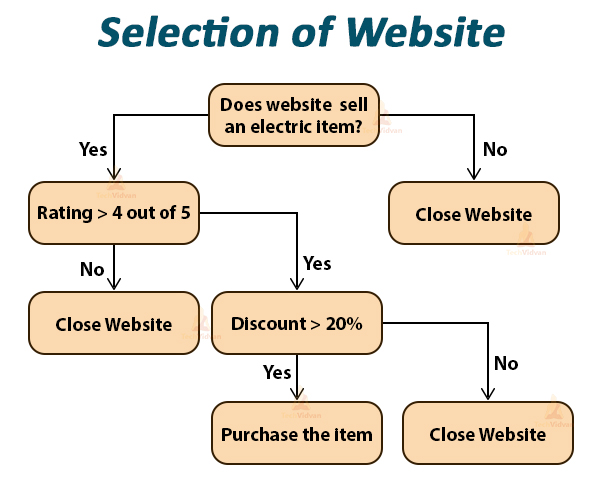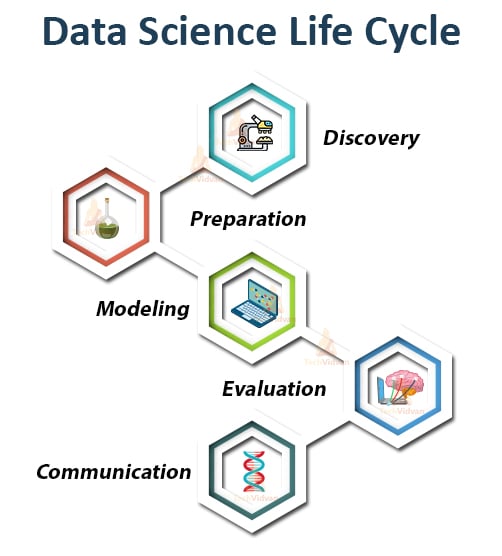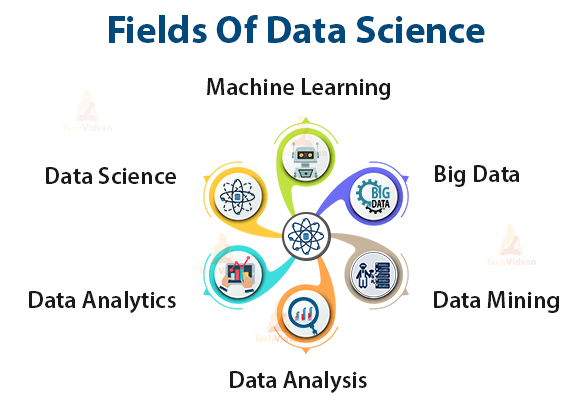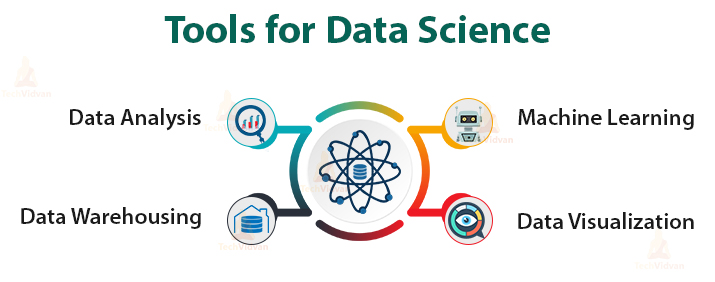What is Data Science? A Complete Data Science Tutorial with Case Study
Are you one of the many who keep hearing the buzz around Data Science, is very keen about data science and ready to dive into the world of Data Science but doesn’t know from where to start. If yes, then this is the right place for you.
In this Data Science tutorial we are going to unfold the secrets of what is Data Science, which makes it a game-changer in today’s business world.
So, let’s begin with the journey of becoming a Data Scientist.
What is Data Science?
Data Science can be simply defined as the process of analyzing data for making a decision/marketing decision. It is a field that is used to study the relationships existing in a large amount of raw data through the application of various scientific methods to derive some meaningful insights from the data.
Data Science is not a single one domain, it’s an interdisciplinary area focusing on analyzing data and finding the best solutions based on them.
Also, Data Science is an inclusive analysis, i.e. it includes all of the data that you have in order to get the most insightful and complete answer to your questions.
To have a better understanding of the concept, let’s consider an example, suppose you have decided to buy electronic items for your home online. So you will have to take a sequence of decisions for buying the items.
So, by what means you are going to take the decision?
Let us start with selecting the website by considering all the websites that sell electronic items. Then we need to find out the rating of the website because if the rating is more that means the products are reliable, and of good quality so only then we should go further. So anything that doesn’t satisfy these criteria you can close all those websites, then we look for the discount.
After analyzing all these factors you proceed further to purchase an electronic item.
A Data Science project also has this same basic idea for extracting meaningful insights.
Now in Data Science, this analysis of data is handled by a data scientist who is responsible for discovering valuable insights from the data by performing various operations on massive datasets.
Now that we know what Data Science is, let’s learn about Data Scientist.
Who is a Data Scientist?
According to DJ Patil, a Data Scientist is a unique blend of skills that can both unlock the insights of data and tell a fantastic story via the data.
As we have learned about the fundamental principles of Data Science and that all the data is handled by a Data Scientist, you all might be thinking that who is a Data Scientist, what does he do and how he manages all the data.
In the emerging world of technology, “Data Scientist” has become a popular job title for companies. In simple terms, a Data Scientist is a professional who collects and organizes the data and then analyzes it for meaningful and actionable insights by using various statistical approaches.
The job of a Data Scientist requires knowledge of math, science, statistics, and computer. So a person having all these skills can easily go ahead with this job. In addition to these skills, to become an efficient Data Scientist, one should be very innovative in his/her approach. One should be able to think out of the box to extract data and get useful insights.
The responsibilities of a Data Scientist include:
- To first discover the actual problem and then analyze it in such a way that it can benefit the organization to the fullest.
- To gather a large amount of raw data from discrete sources.
- Altering the large datasets to fetch the data which is relevant to the problem.
- To clean the large datasets and validate it to ensure greater accuracy of the results.
- Finding different patterns, values, and relationships in the data.
- Finally presenting the findings and results of the complete process through data visualization and various other means.
Data Science Life-Cycle
We have explored various roles and responsibilities of a Data Scientist but all these tasks are not really easy. Every Data Science project proceeds in several stages. Every stage requires several skills and tools.
The various phases of Data Science projects are :
1. Discovery
The life cycle of Data Science begins with the discovery of data. This stage involves collecting data from discrete sources like various social media platforms, online sources, logs, etc.
This stage can be carried out by any individual who might not be a Data Scientist but has a piece of proper understanding of how to ask the right questions to examine different factors affecting a Data Science project.
These factors include determining the various requirements of the project, estimating the overall expenses, time, technologies, etc.
2. Data Preparation
The effective analysis of data requires massive datasets but without compromising the quality of data. So after collecting the data and other resources, this stage is carried out to select a quality data subset from a very large amount of raw data. Thus this process is also referred to as Data Cleaning.
This stage is performed to locate and remove the outliers and several anomalies from the data as well as to discover various trends and relationships in the data.
Various tools such as R can be used for the cleaning of data. The cleaning of data will help the Data Scientist to have a better understanding of the data.
3. Modeling
Now, this is the stage in which the data is actually analyzed to extract meaningful insights from it. This requires the knowledge of various areas of math like statistics, probability, linear regression, logistic regression, etc.
The most commonly used tool for this purpose is R, however, there are several other tools like SQL, Tableau, etc. The main aim of this phase is to identify suitable machine learning algorithms and to find as well as build the model which best fits the business needs.
4. Evaluation
Evaluating the performance of a knowledge mining technique may be a fundamental aspect of machine learning. Evaluation measures can differ from model to model, but the foremost widely used data processing techniques are classification, clustering, and regression.
After building the models, these models are applied to the datasets to get the desired results. The results are then evaluated to test the performance of the models. These observations are used to improve the model to get the best results.
5. Communication
Communication is a very important phase in the Data Science life-cycle. In this phase, the Data Scientist presents all the key findings of the project to the stakeholders and other members of the organization. This is to evaluate the accuracy of the results and to ensure that the project satisfies all the user requirements.
Depending on the feedback received from the stakeholders, the Data Scientist will make the required changes.
Why Data Science?
After discussing a lot about what is Data Science and Data Scientist, there must be a doubt in your mind that why I should become a Data Scientist or why Data Science is so important.
We hear a lot about how artificial intelligence and machine learning are going to change the world and how the Internet of Things will make everyone’s life easier.
But in reality, the one thing that underpins all of these revolutionary technologies is “data”.
In a world that is approaching a digital space, organizations deal with an immeasurable amount of structured and unstructured data every day. This data can be collected from various possible sources, out of which the most common sources are the self-directed interviews, surveys, observations, and experiments.
The data can also be collected from other sources such as research done by various researchers, online surveys, various government organizations, social media accounts, etc.
Well, this data is known as Big Data.
In today’s era, companies are flooded with a gigantic amount of data, thus it is very important to evaluate what to do with this immense data and how to utilize it.
Now here comes the idea of Data Science, which uses a combination of various skills like statistics, a good knowledge of math, and the idea of business strategies to analyze the data and help the organization in taking market decisions.
The demand for a Data Scientist has increased rapidly in various industries such as Healthcare and Pharmaceutical, Finance, etc.
Most of the biggest organizations around the globe are exploring the power of Data Science to use customer data to identify their needs in order to enhance their services as well as revenue generation thus making it the most demanded job of today’s era.
Here, the game-changing factor for an organization is that, “how well they extract the values by analyzing the data and the efficiency of the way of representation”.
Some of the biggest and best companies like Google, Amazon, etc. are hiring data scientists at top-level salaries. One of the leading job sites published a report in January, which shows that over the past few years the demand for Data Scientists has shown an astonishing growth.
The job opportunities for Data Scientists have increased by 29% per year and 344% since the year 2013.
But when compared to this high demand, the skills which are required in a Data Scientist grew at a much slower rate (14%), implying a considerable gap between supply and demand.
Components of Data Science
Now we will discuss some of the key components of Data Science, which are:
1. Data
The raw dataset lies at the core of Data Science, this raw data can be found in different forms like structured data . It is mostly available in the form of tables and unstructured data which is available in the form of images, videos, pdfs, etc. and is more difficult to handle.
2. Programming
In Data Science, the data is managed and analyzed by making use of computer programming. Several programming languages can be used for this purpose.
3. Statistics and Probability
We can manipulate the data in different ways to extract information out of it. In Data Science, Statistics and probability have a very important role to play. It provides a way to analyze the numerical data in a large amount and finding meaningful insights from it.
4. Machine Learning
Machine learning has a very significant role in the field of Data Science. It is the branch of artificial intelligence that aims to make the machines smarter by enabling the machines to learn from the data itself by training them using various algorithms.
5. Mathematics
Mathematics is one of the core components of Data Science. Various mathematical components help you to identify patterns in the data and then design algorithms accordingly. For becoming a Data Scientist, a good knowledge of mathematics is very essential.
Fields of Data Science
There are many different fields of Data Science such as Data analysis, Data analytics, etc. In this part, we will walk through the areas in which Data Science plays a very important role.
1. Big Data
In today’s world, a huge amount of data is generating. The data is a very critical element for organizations all over the world.
But the problem arises when it becomes difficult to manage and handle the data using traditional techniques, in such situations, it is referred to as big data.
2. Data Mining
Data mining is the process of finding hidden patterns, trends, and information in the data. In other words, we can say that it is the process of mining knowledge i.e. useful information from large volumes of data i.e. raw datasets.
3. Data Analysis
In today’s world, a large amount of data is available and can be collected through many sources such as observations, interviews, surveys, etc. But this data is of no use for us until we do not know how to convert this data into meaningful information.
Data Analysis pertains to how raw data is chosen, evaluated and interpreted into meaningful and significant conclusions that are easy to understand and use.
4. Data Analytics
Data Analytics can be defined as a technique for data analysis. It can be considered as a larger picture of many different types of data analysis.
Any type of raw data can be exposed to various techniques of Data Analytics which can help you to get insights that can improve things in many ways.
Data analytics makes use of various tools and techniques that collect the data, inspects it and helps to transform the data in such a form that it becomes easy to understand and visualize.
5. Data Science
Data science is the study of data. It comprises an entire life-cycle that begins with collecting the raw data including both structured as well as unstructured data from various sources through various data collection techniques.
Cleaning the data to extract insights and then make a decision that can help in solving a real-life problem.
6. Machine Learning
The machine follows the instructions given by humans and performs accordingly but what if a human can train the machine to make a decision by itself. This is what we are trying to do by using machine learning algorithms.
Machine learning is used to build computer programs that can access the data and learns from the data itself.
Data Science Tools
While building a Data Science project having the right tools available is essential.
The main advantage of these tools is that they don’t need much programming for implementing Data Science. They come with pre-defined functions, algorithms, and a very friendly GUI.
The various tools used in Data Science for different stages are:
1. Data Analysis Tools
Finding the values and extracting the meaning from the data lies at the core of Data Analysis.
Data Analysis tools enable you to easily understand and derive the actual meaning from your data which can help you in making business-changing decisions . This can have a great impact on the revenue, innovation, customer experience, and overall efficiency.
The various data analyzing tools used are R, Python, Statistics, RapidMiner, SAS, Jupyter, MATLAB, Excel, etc.
2. Data Warehousing Tools
Data Warehouses functions as the repositories for the data that has been collected from multiple, discrete sources and then standardized for ease of use. It is used for achieving better speed and efficiency while accessing the datasets so that the insights can be derived easily to make more accurate data-driven decisions.
The various tools used for Data Warehousing are ETL, SQL, Hadoop, Google BigQuery, AWS Redshift, Snowflake, etc.
3. Data Visualization Tools
The data visualization tools help in identifying the patterns and trends in your data and helps the users to have a better understanding of the data. It’s much easier to access, understand, and share visual representations of your data in the form of charts, graphs, and maps.
The various tools used for Data Visualization are R, Jupyter, Tableau, Cognos, QlikView, etc.
4. Machine Learning Tools
The machine learning tools are used to train the machine to make predictions about the business as well as many other decisions. Machine learning is a part of Data Science.
Various machine learning algorithms are trying to make machines similar to humans by giving them the ability to learn automatically without applying any human efforts.
The various tools used for machine learning are Spark, Anaconda, DataRobot, Azure ML studio, etc.
Applications of Data Science
Data Science has many applications that have a huge impact on our daily lives. Some of the applications of Data Science are listed below:
1. Internet Search
In our daily lives, we search for various different things over the internet. For this purpose we use different types of search engines like Google, Yahoo, Bing, Ask, etc.
All these search engines use data science technology to make the search experience better and fetch the best possible search results.
2. Recommender Systems
We all are used to suggestions about similar products on Amazon which help us to find the desired product from billions of products.
Many of the internet giants like Netflix, Twitter, Google Play, LinkedIn, etc. are using this technology for providing better user experience.
3. Gaming
The use of machine learning in the gaming world have led gaming experience to the next level.
EA Sports, Sony, Activision-Blizzard, etc. are using Data Science for providing a better gaming experience and to upgrade themselves.
4. Transportation
You all might have heard about self-driving cars. According to many studies, we can hope that in about 10-15 years most of the cars will be automated. The transport industries are making use of Data Science for this automation.
5. Image Recognition and Speech Recognition
Most of the social networking sites are using data science for implementing image recognition.
For example, while uploading a picture on Facebook, it starts suggesting you to tag your friends. These automatically coming suggestions for tagging your friends make use of image recognition.
The various voice assistants such as Google Siri, Cortana, etc. make use of the speech recognition algorithms to identify your words and phrases and respond accordingly.
Data Science Case Study
Data Science at Netflix Case Study
Netflix, which is one of the most popular internet television networks among the youth, is using Data Science to utilize big data to provide better entertainment services. You all might have seen many youngsters status saying that “Netflix and Chill” on various social media platforms.
But, when Netflix started its video streaming services in 2007 it was not much popular as of now. But with the increasing data, it understood the power of big data and started working on it.
Today, Netflix has more than 33 million subscribers all over the world. And it has reached to such heights by using Data Science. Netflix keeps the records of the complete details of its each and every subscriber.
The various details are:
- Series and movies the user likes the most.
- The device that the user uses for streaming.
- Search history of the user.
- Contents on the app that the user watches on repeat.
- Whether the user stops watching something after some time.
- Location details of the user.
- All the social media accounts of users like Facebook, Instagram, and Twitter.
After gathering all these details, the company uses this data to accomplish several goals to engage more and more people with its content. Using all these customer’s data, Netflix gives personalized recommendations to the customers according to their interests.
Netflix proves to be so good in achieving this, that around 80% of the videos streaming on its platform are because of its outstanding recommendation system. The most popular example to illustrate the use of Data Science in Netflix is “House Of Cards”.
House Of Cards
Netflix always keeps a close check on all the activities of its subscribers. This phase proved to be a game-changing turn for Netflix in the Business world in 2013.
Based on the users’ data, Netflix observed that the people are crazy about the television show “House of Cards”, its lead actor Kevin Spacey, and are loving the direction by David Fincher and are streaming videos related to them.
Considering these observations, Netflix decided to launch all the episodes of an already popular television show in Britain named House of Cards on its platform and it proved to be a very successful decision. Because within three months of its launch the company engaged more than 3 million new subscribers internationally.
Netflix continuously keeps updating its content according to user requirements and changing business dynamics. Its main aim is to provide a quality experience to its users and make them believe that they are worth their money.
Thus, Netflix sets a great example to understand how Data Science is changing the world.
Summary
With this Data Science tutorial, we hope that now you know the answer to, “What is Data Science”.
Data science is the study of data handled by a Data Scientist who uses a combination of several skills and tools for decision making and predictive analysis that has changed the dynamics of today’s era of digitalization through its various applications.
Data Science is a very vast field and is growing with every passing day, thus accelerating increase of career opportunities in its various fields.





